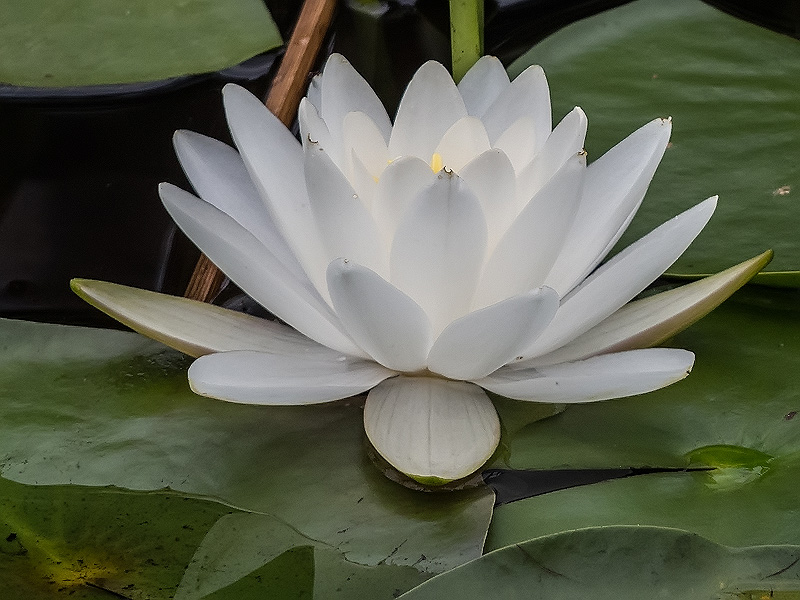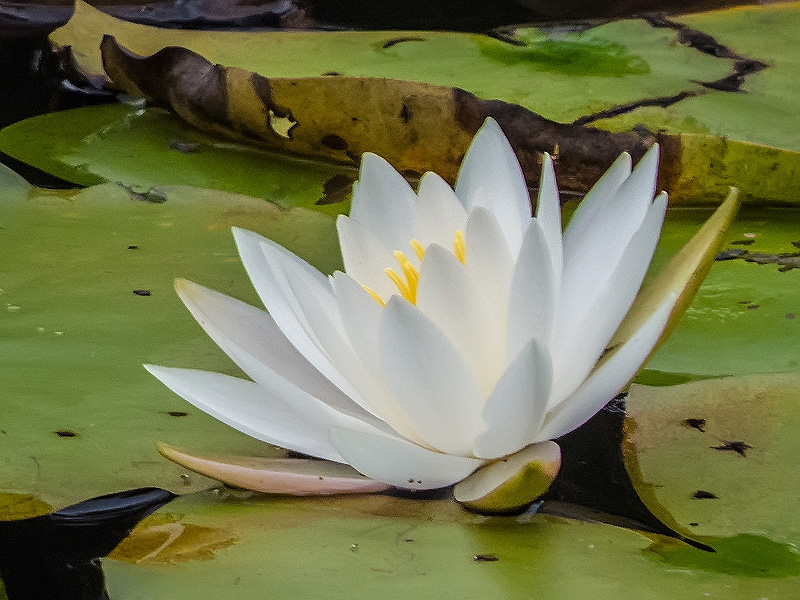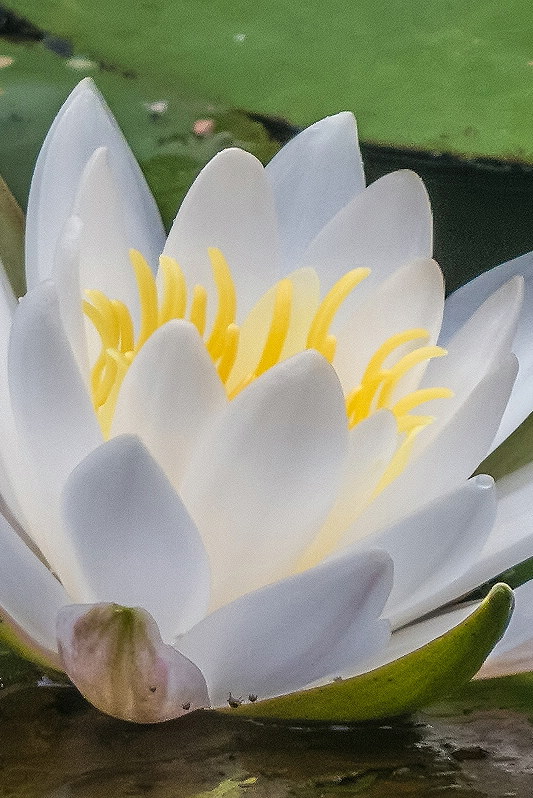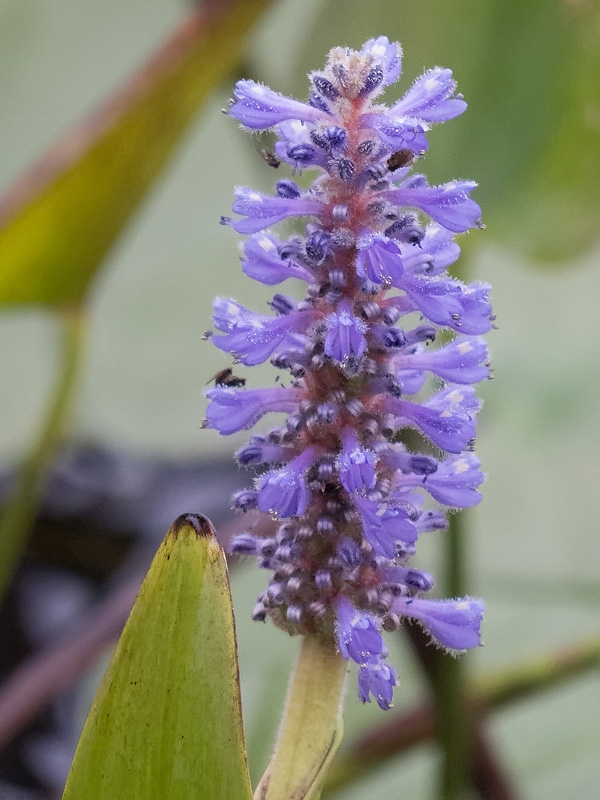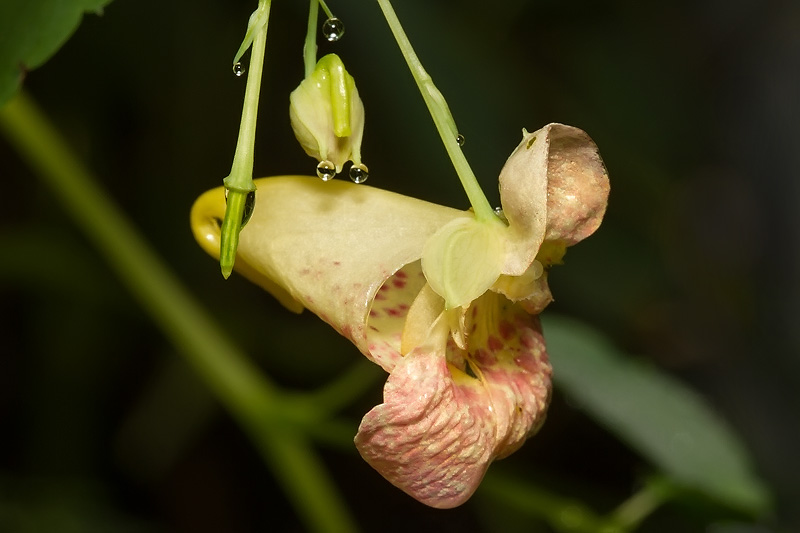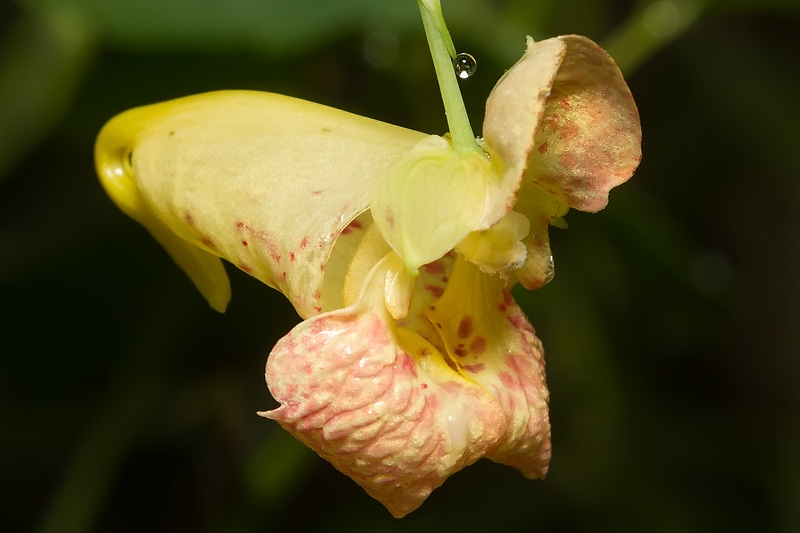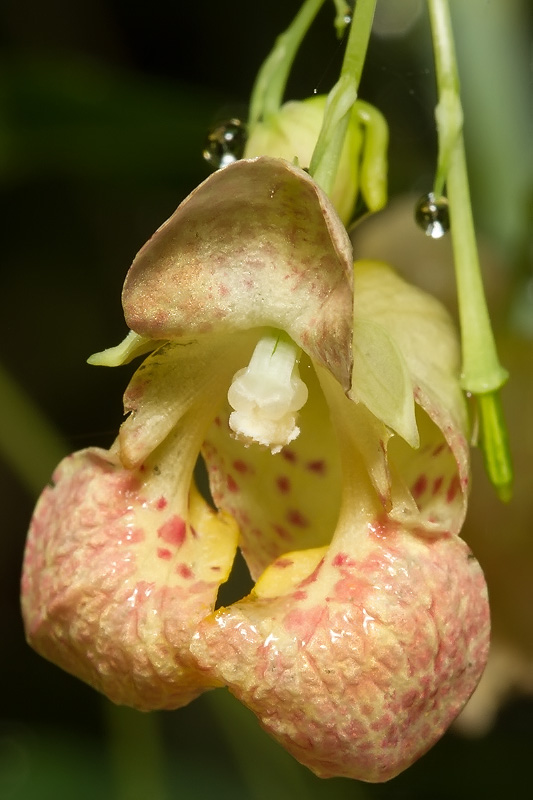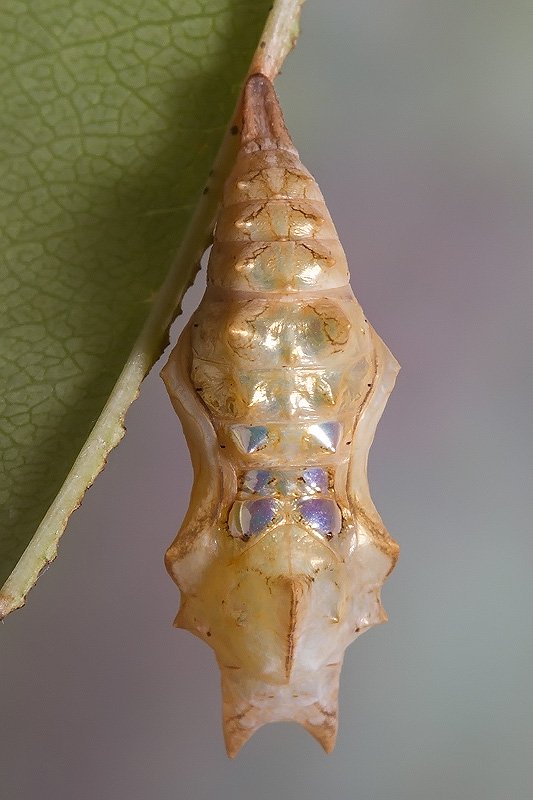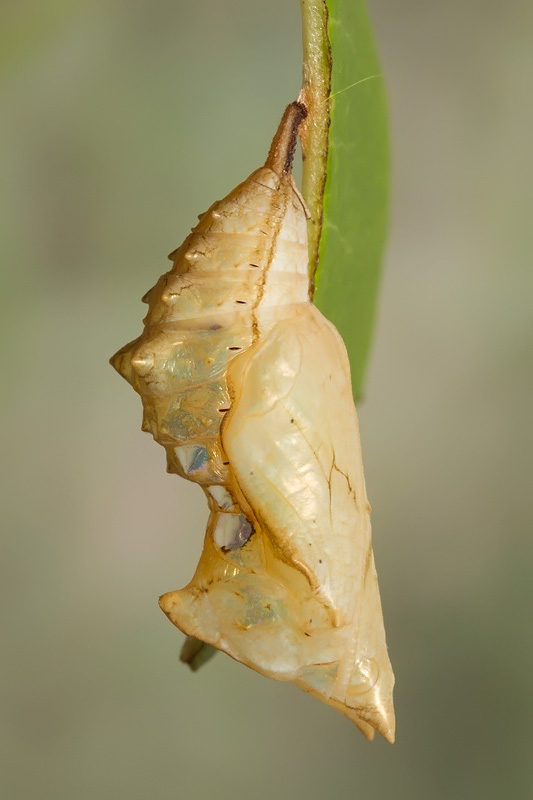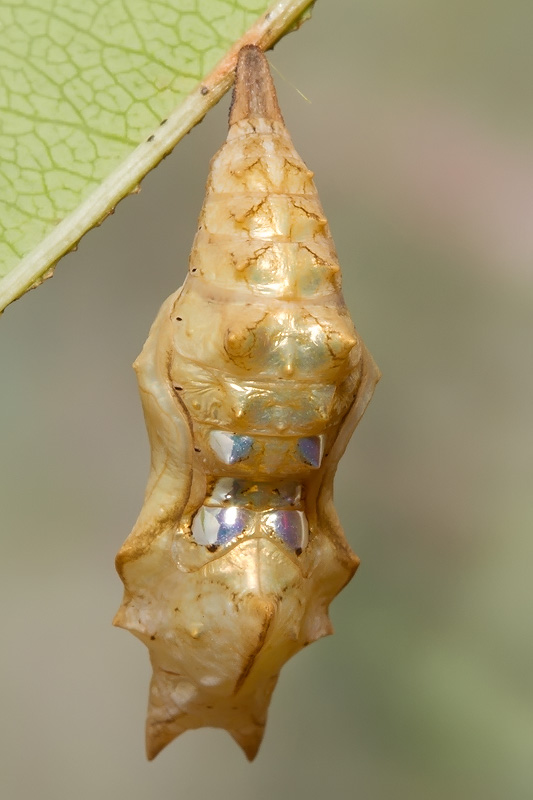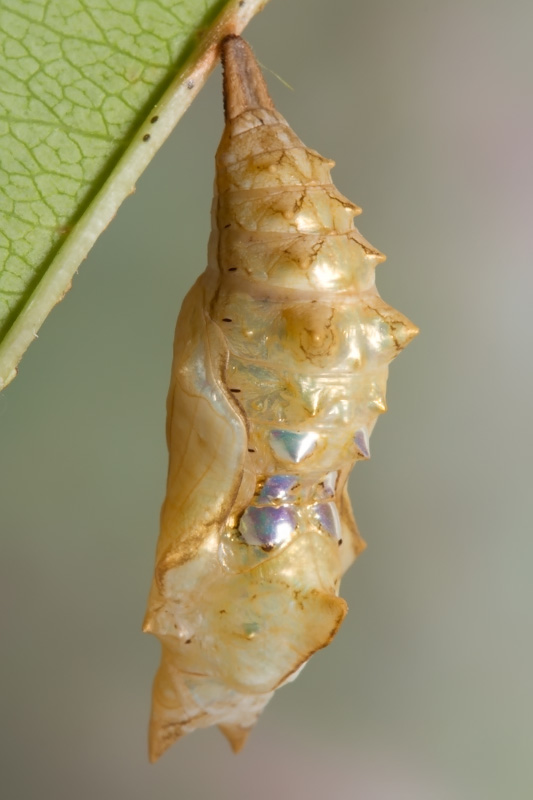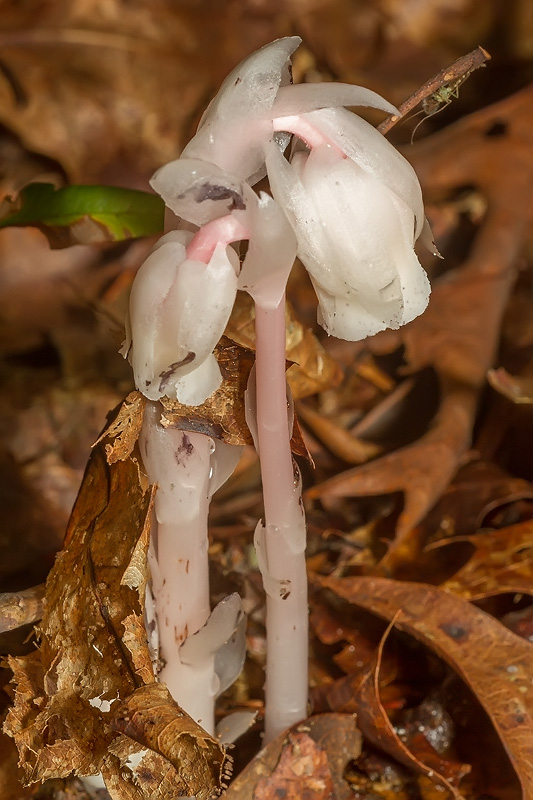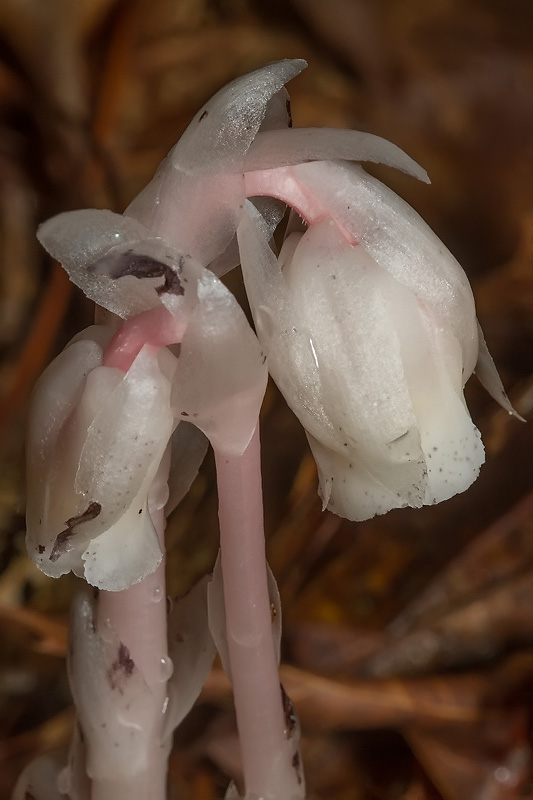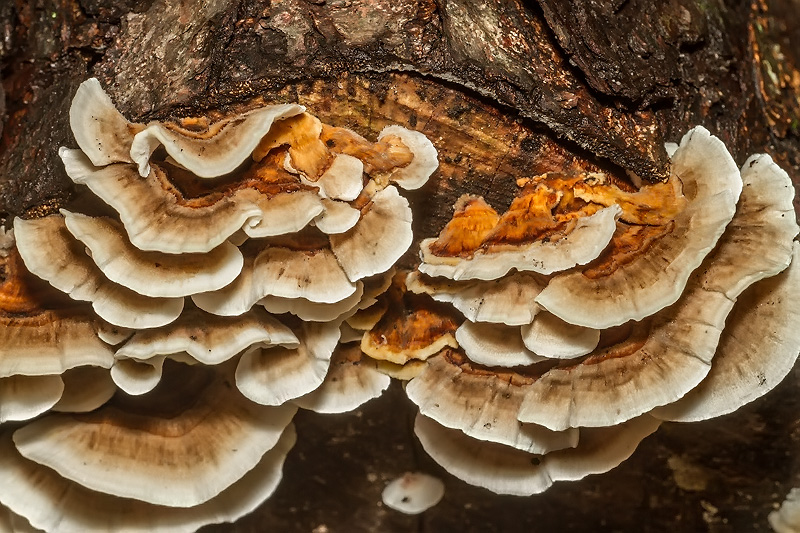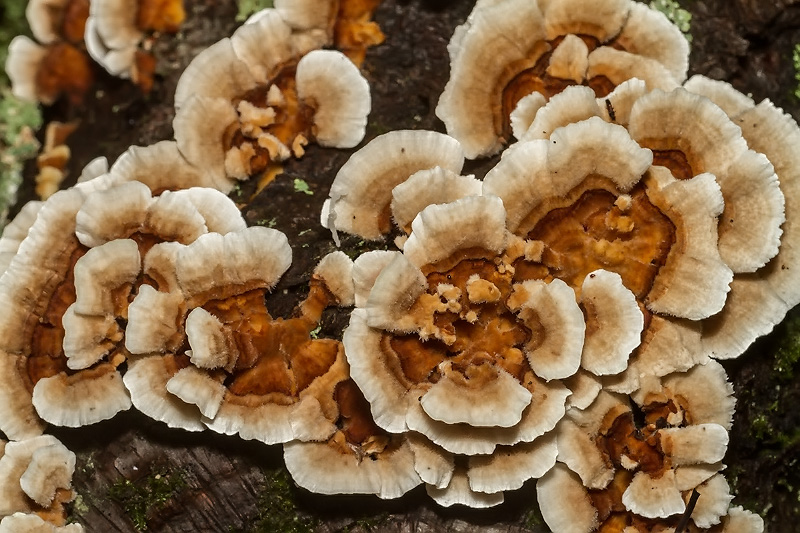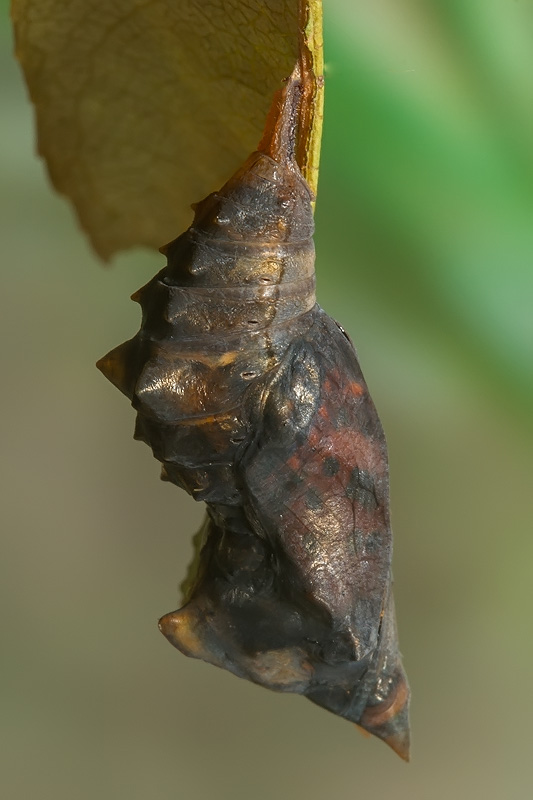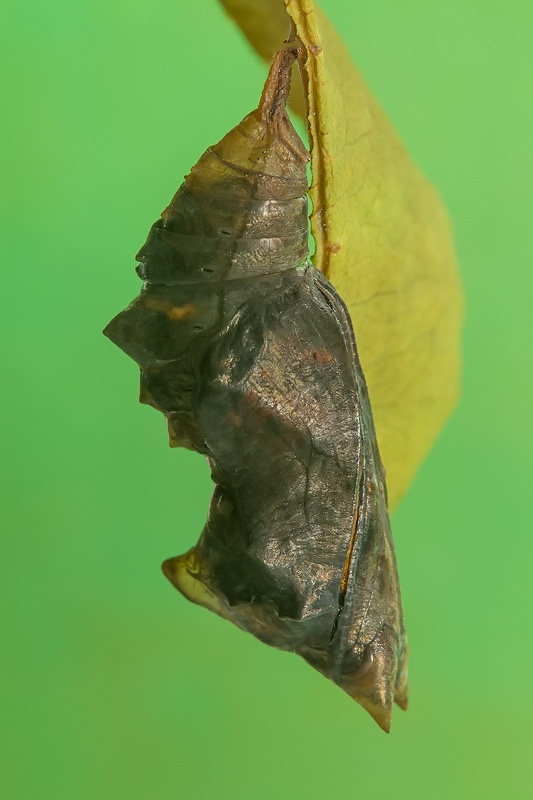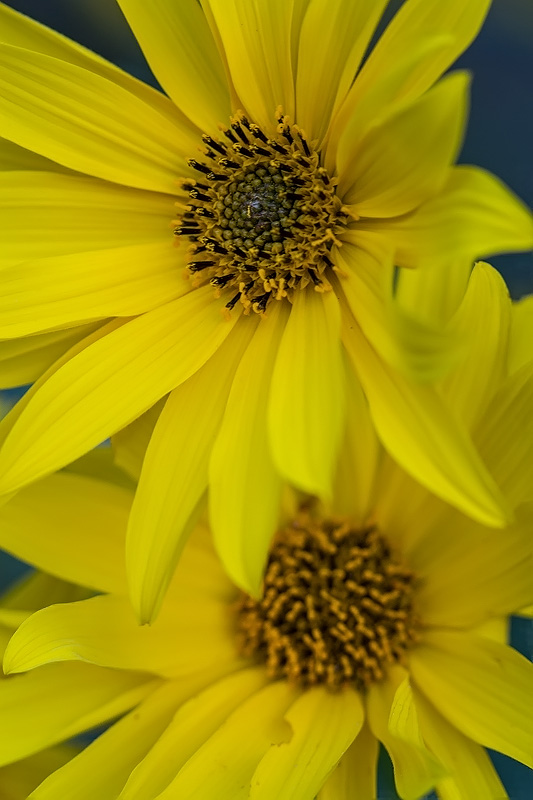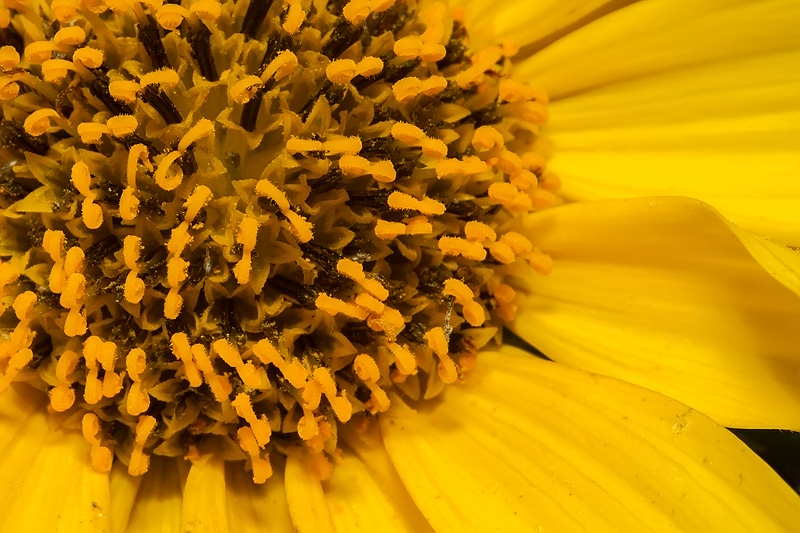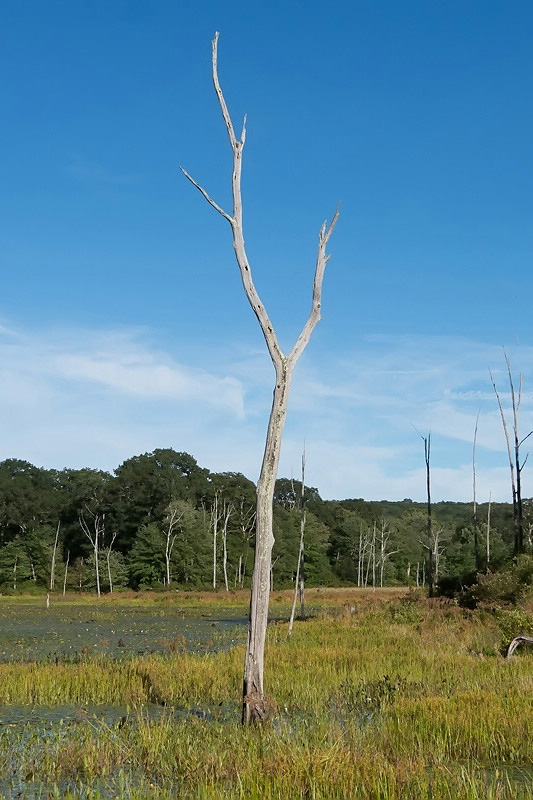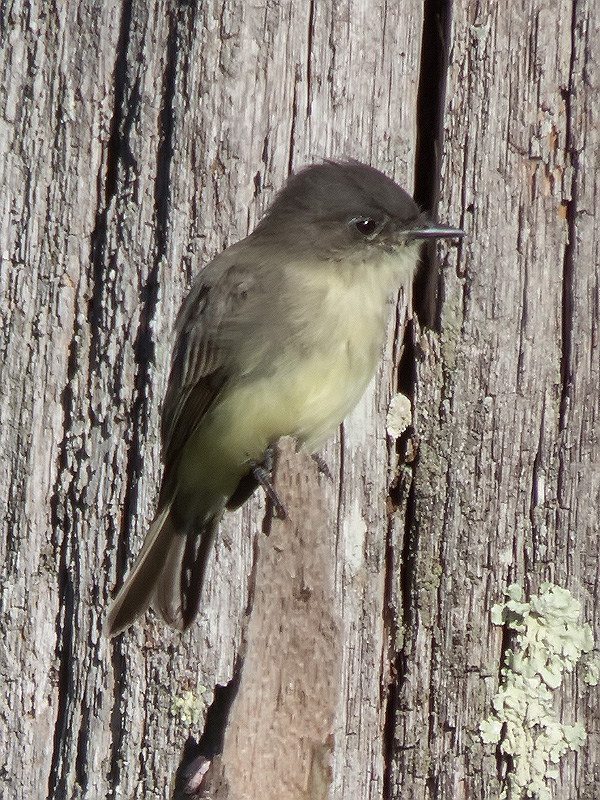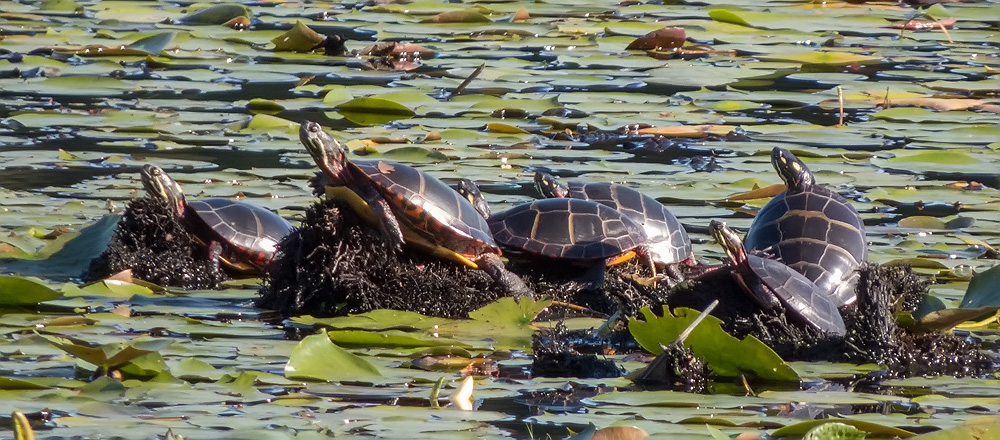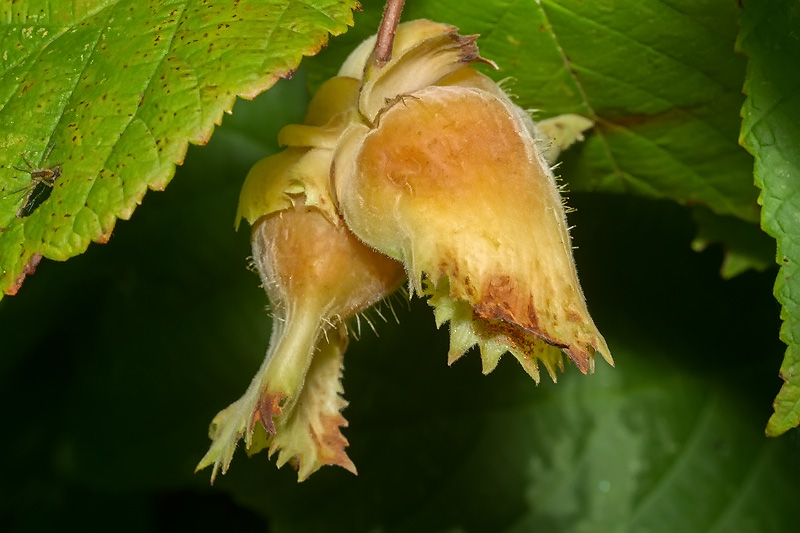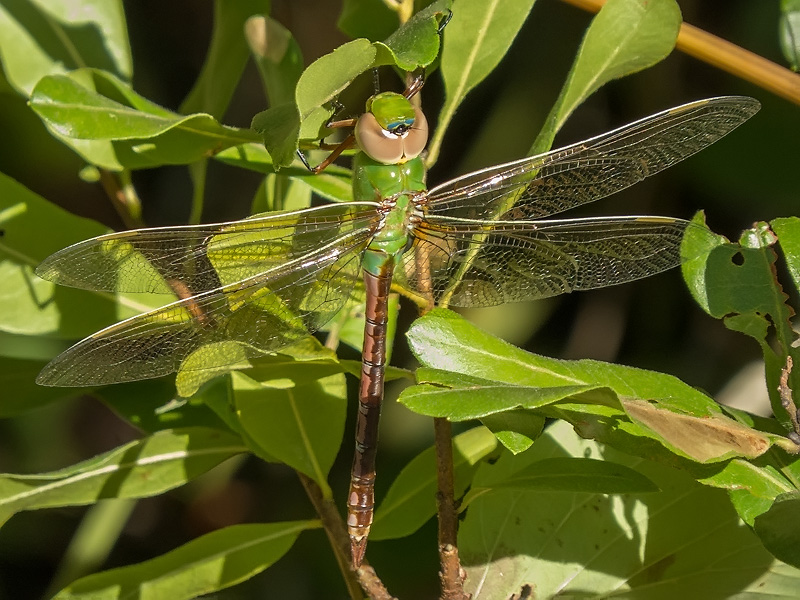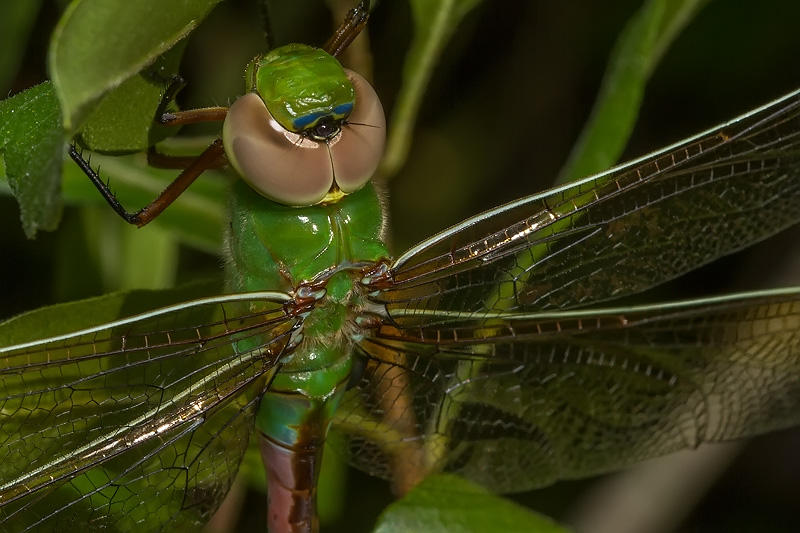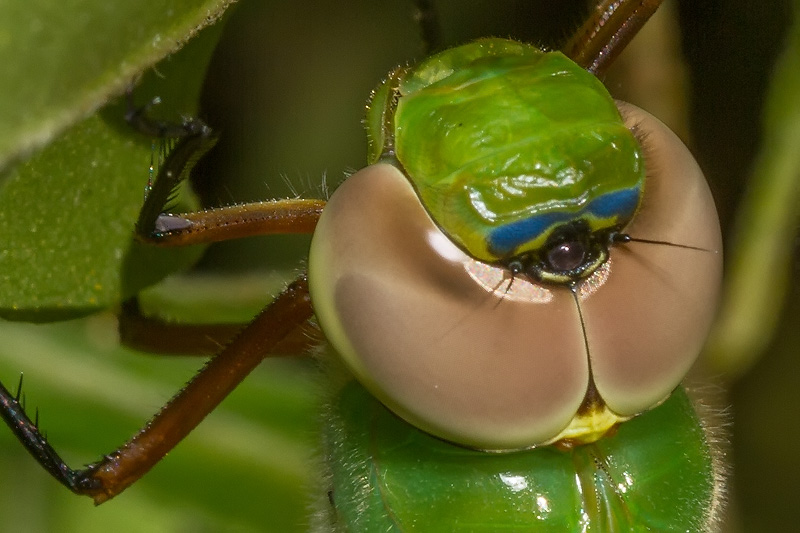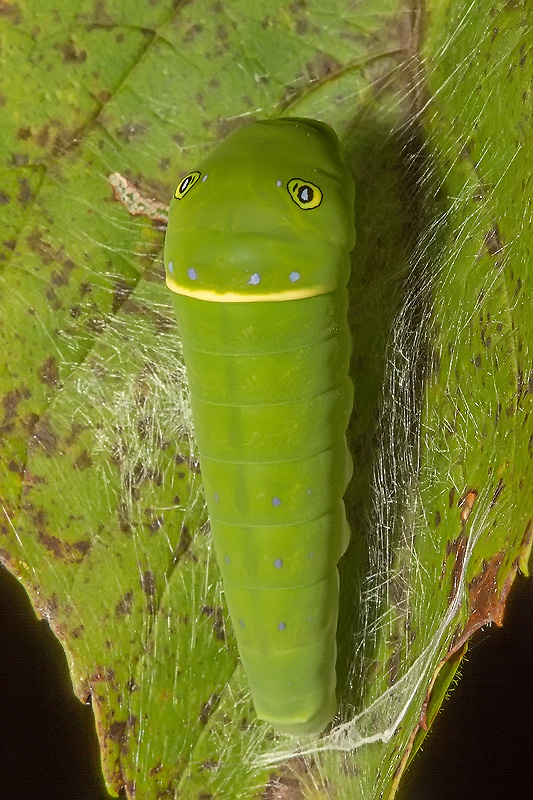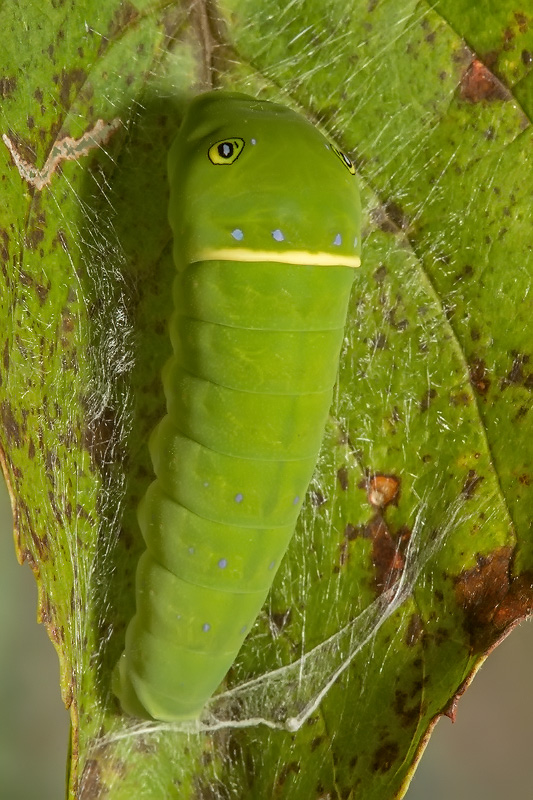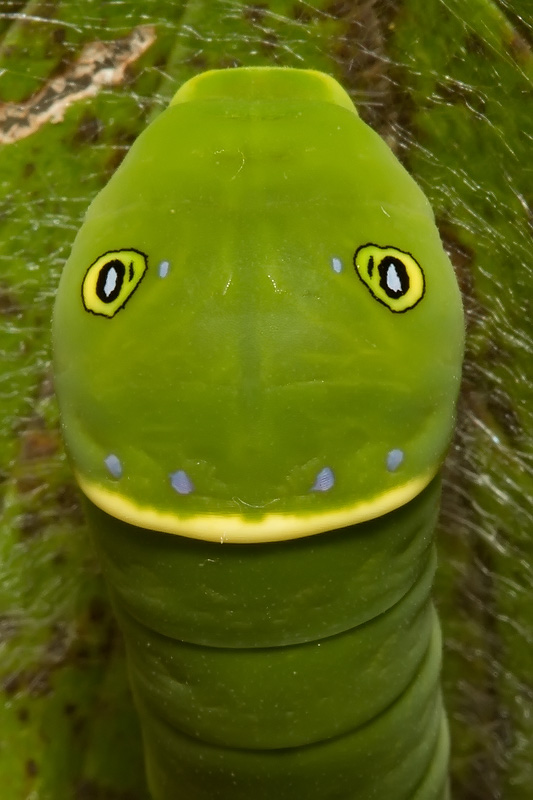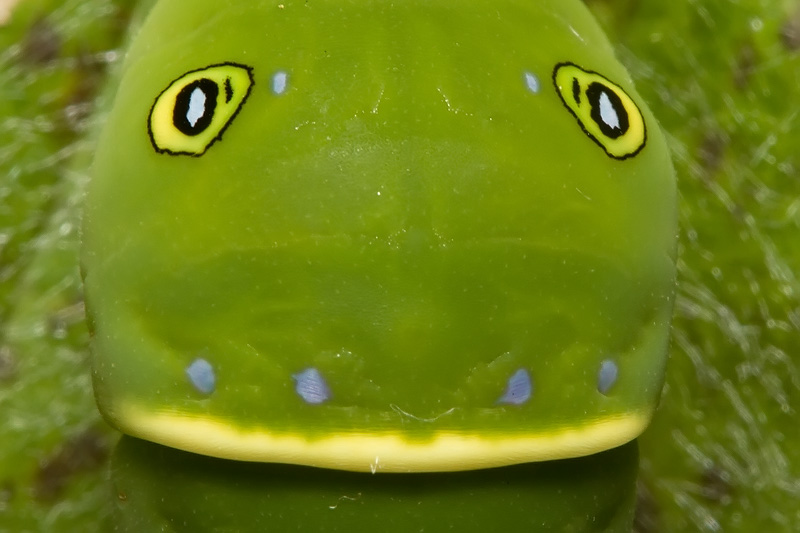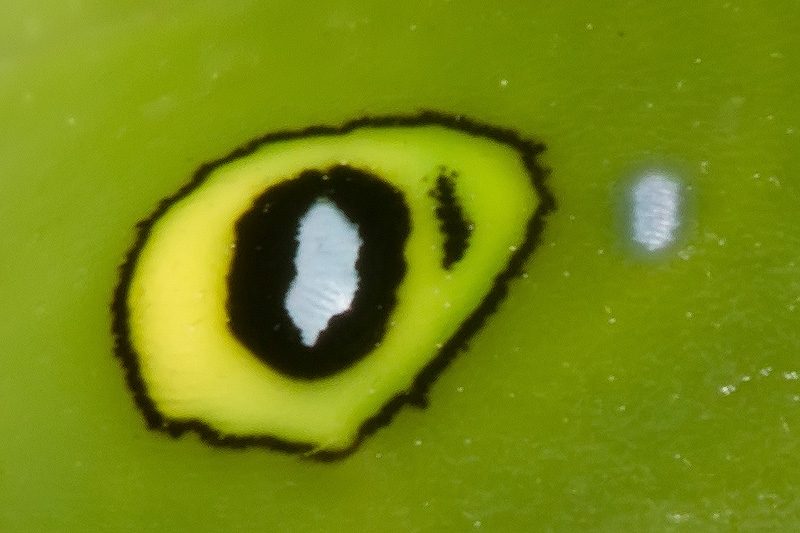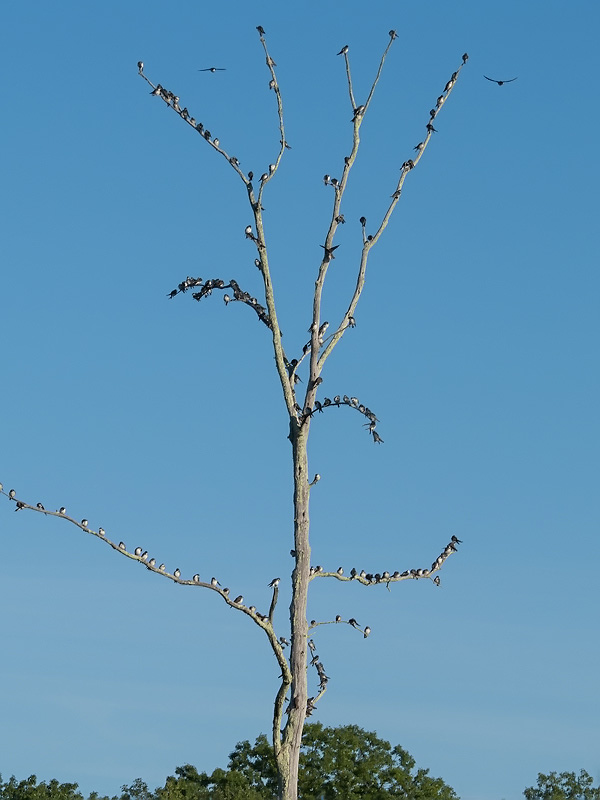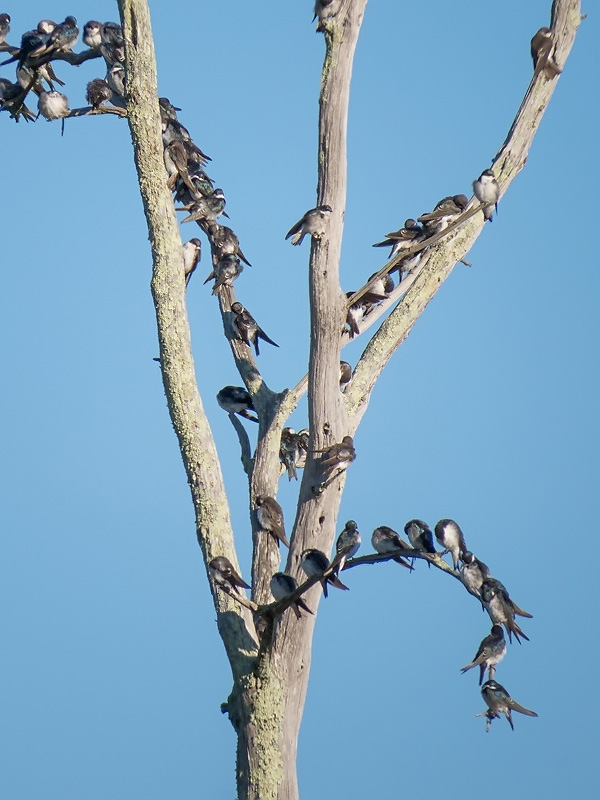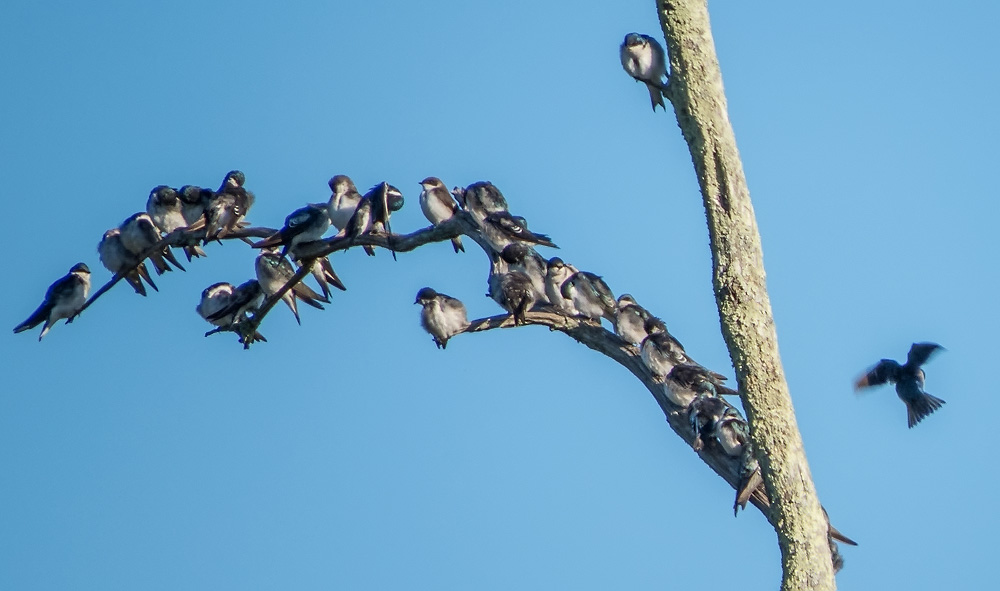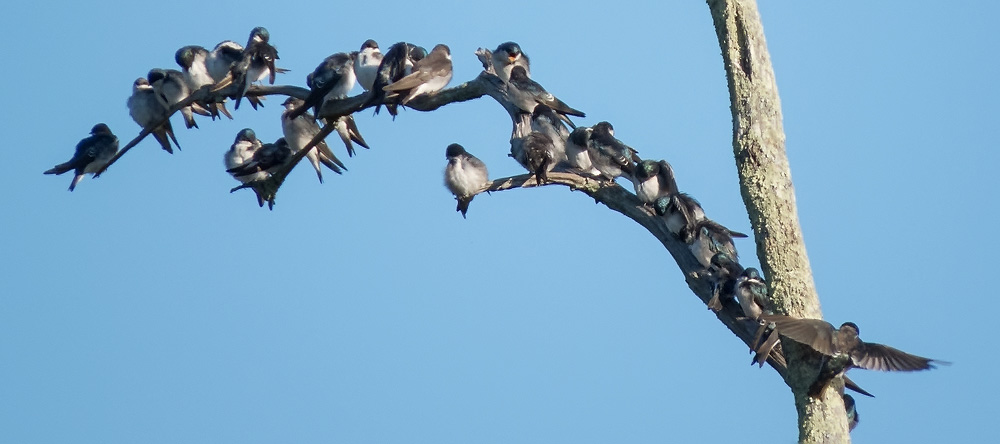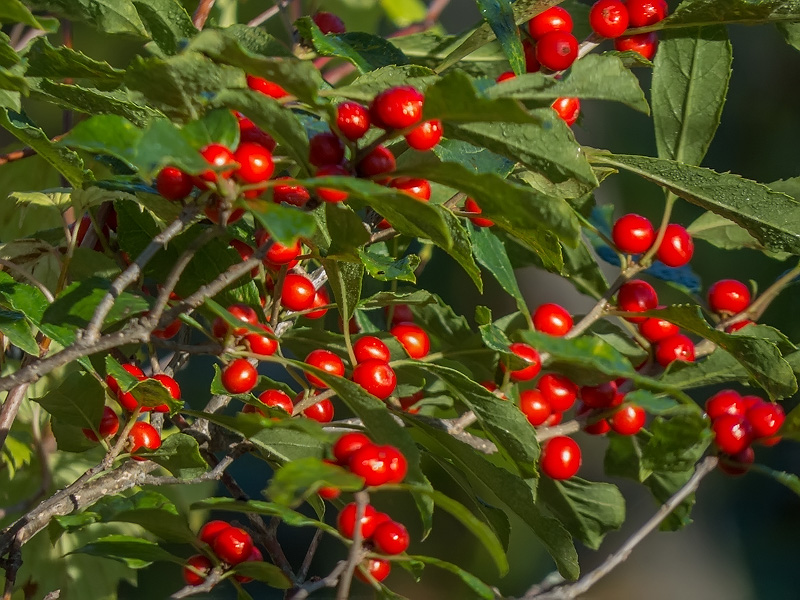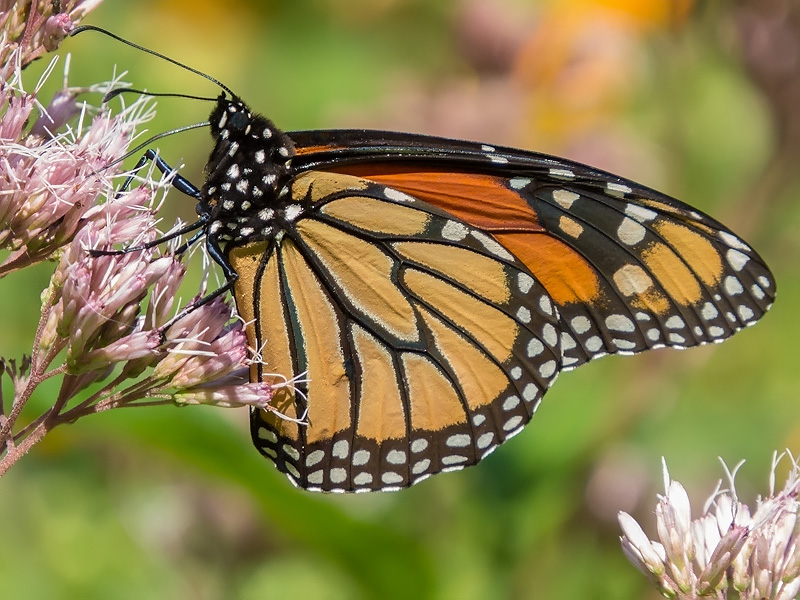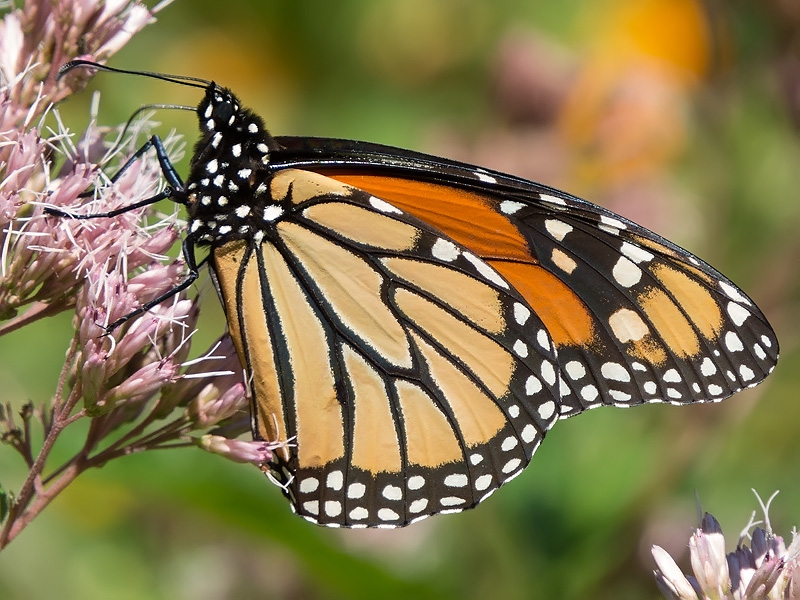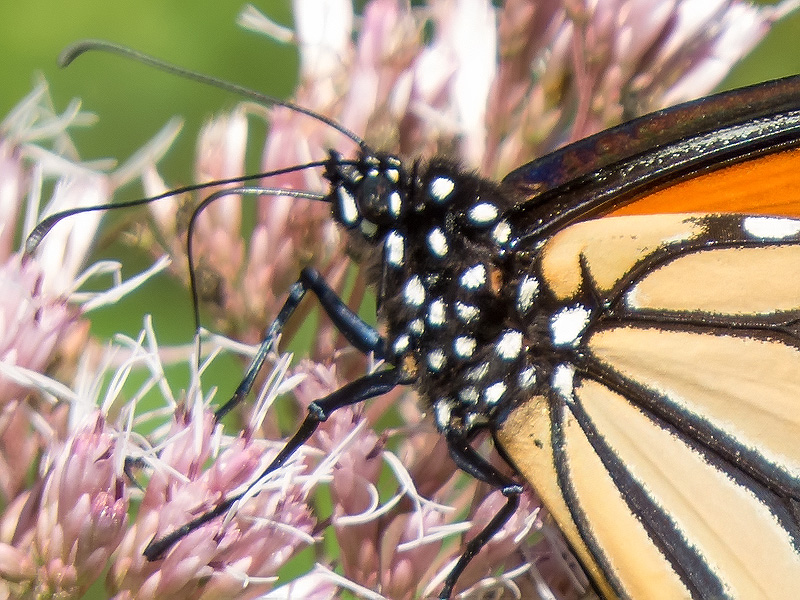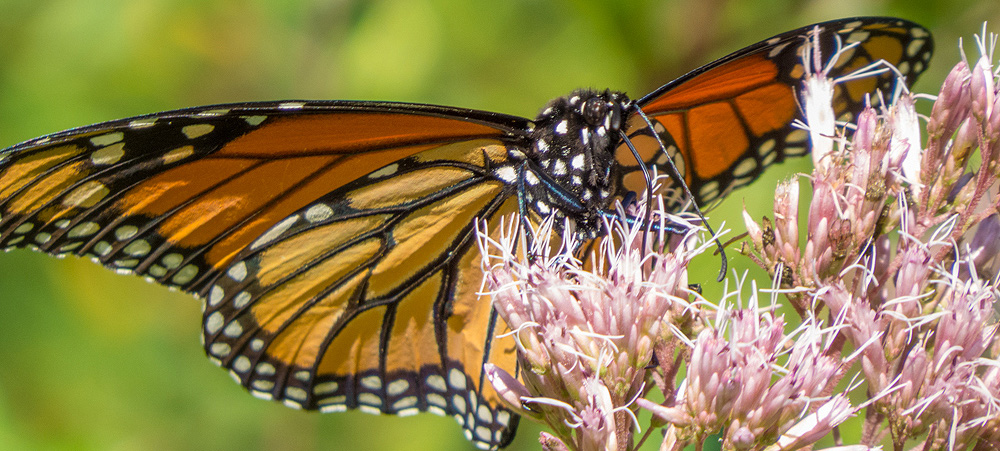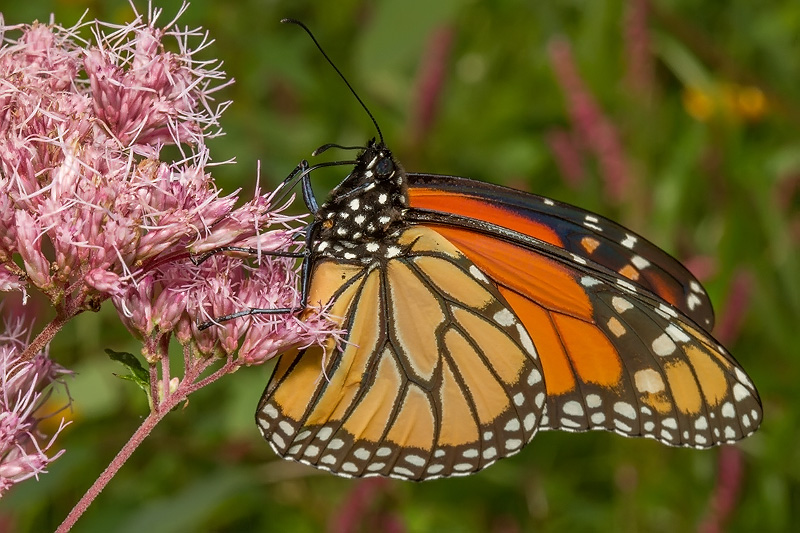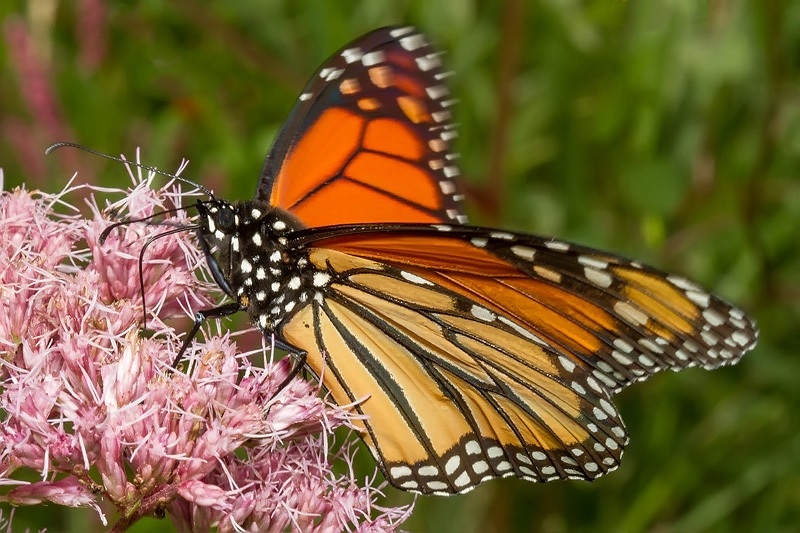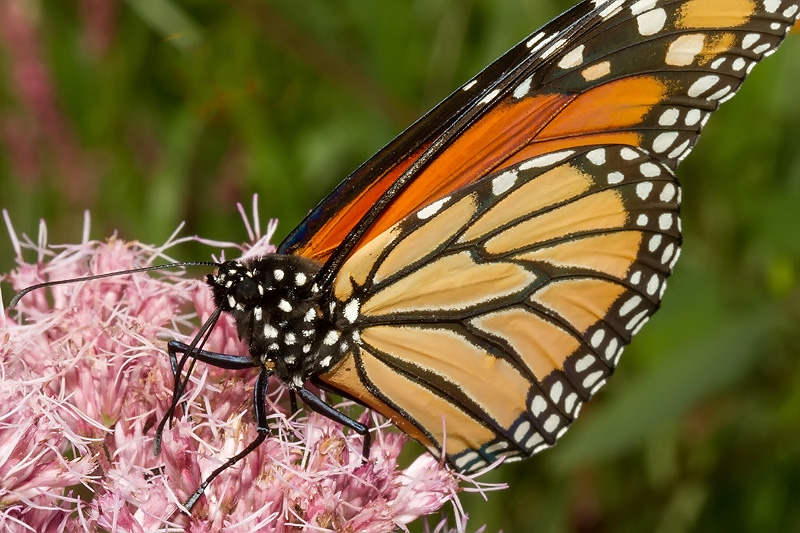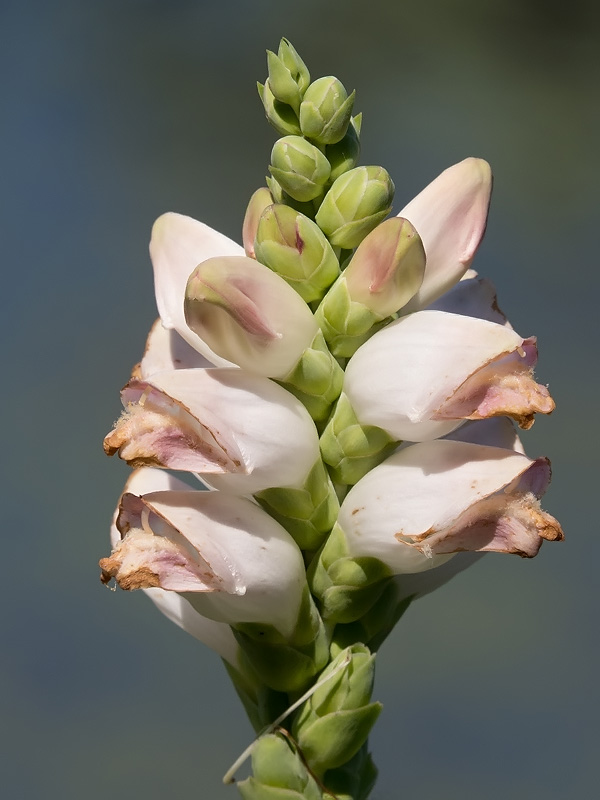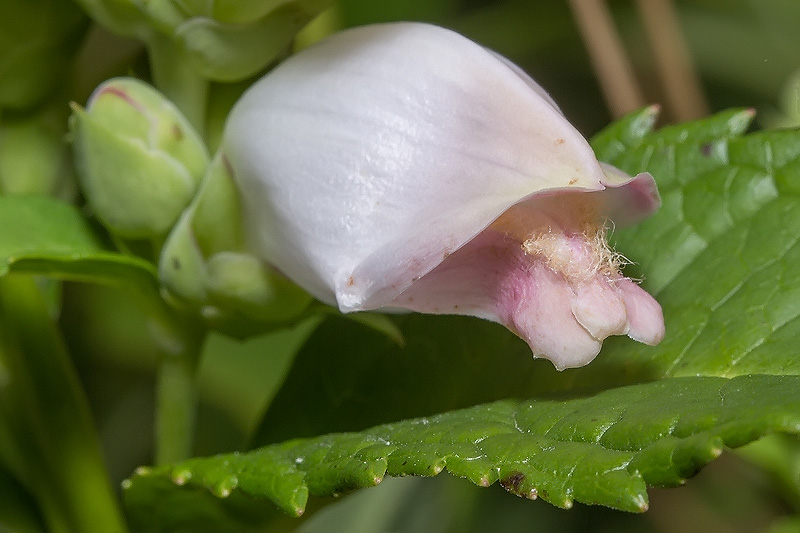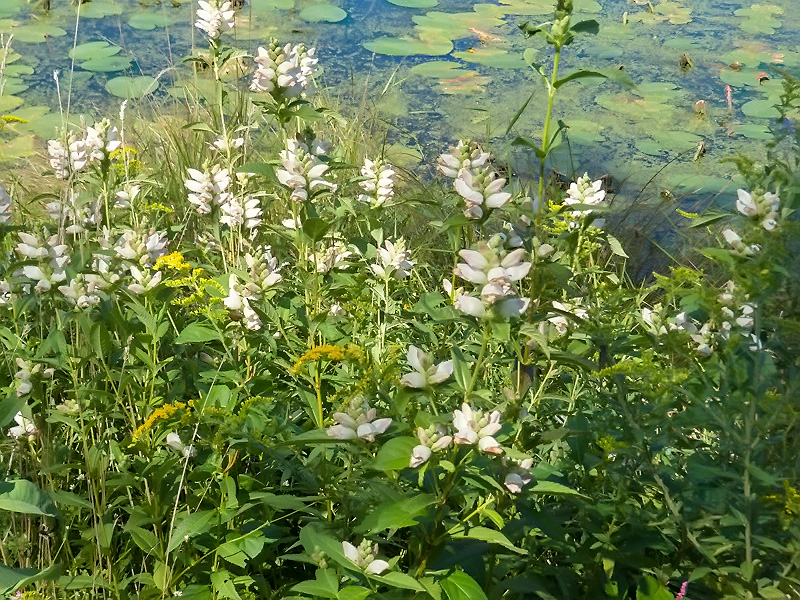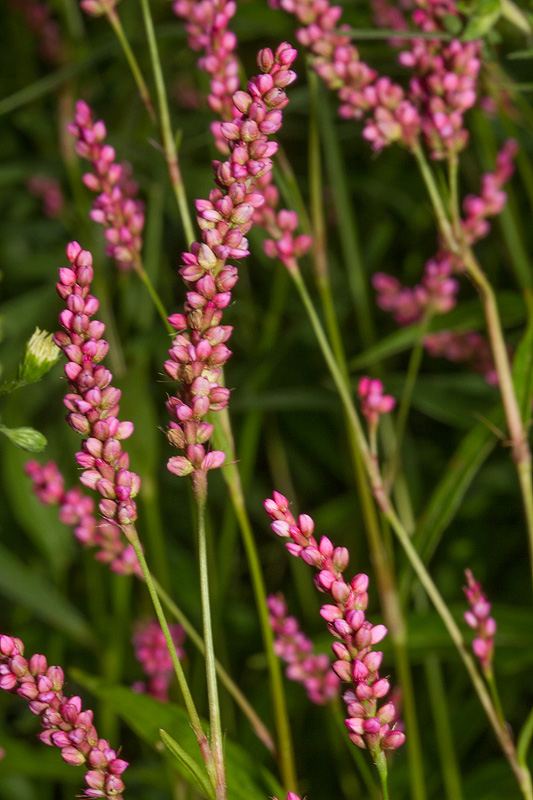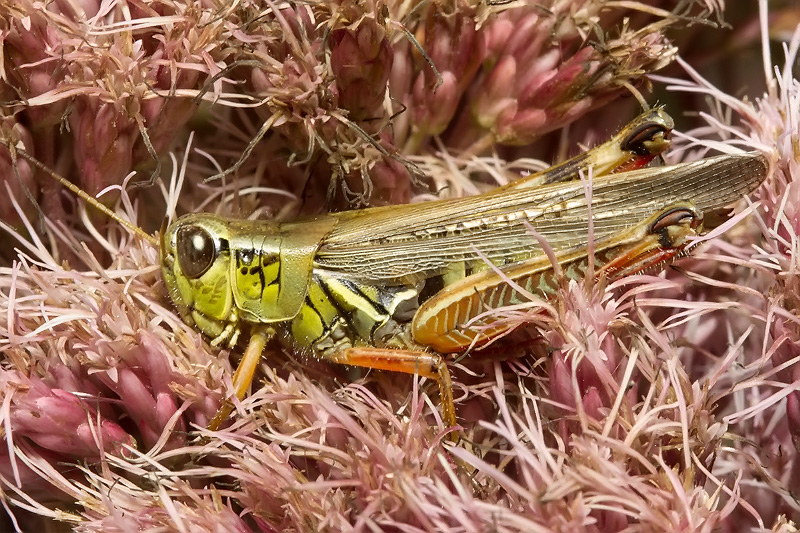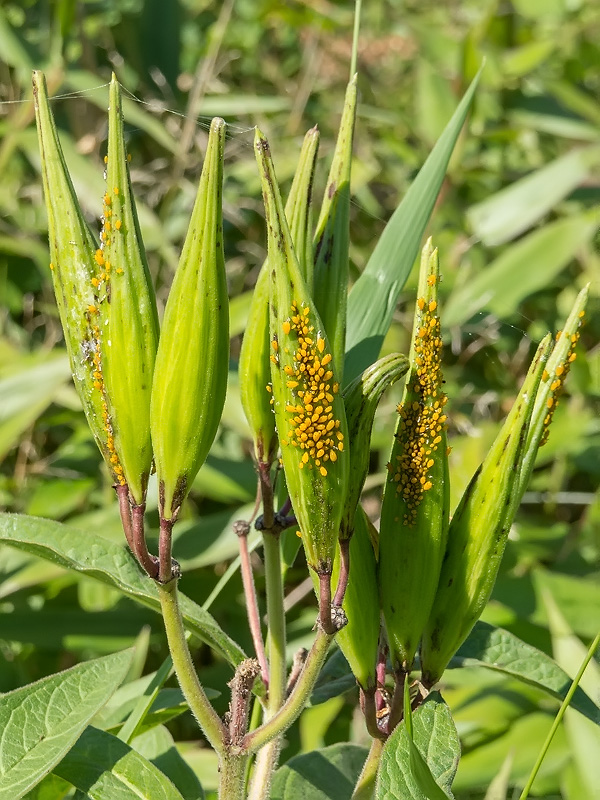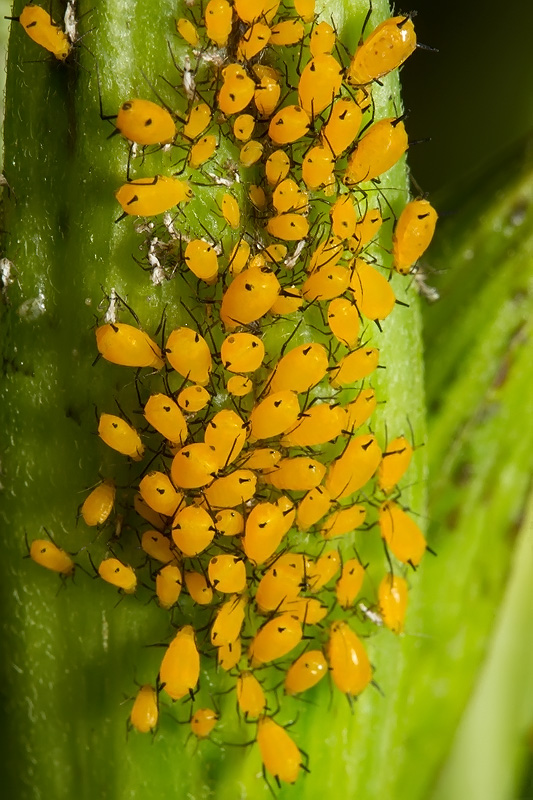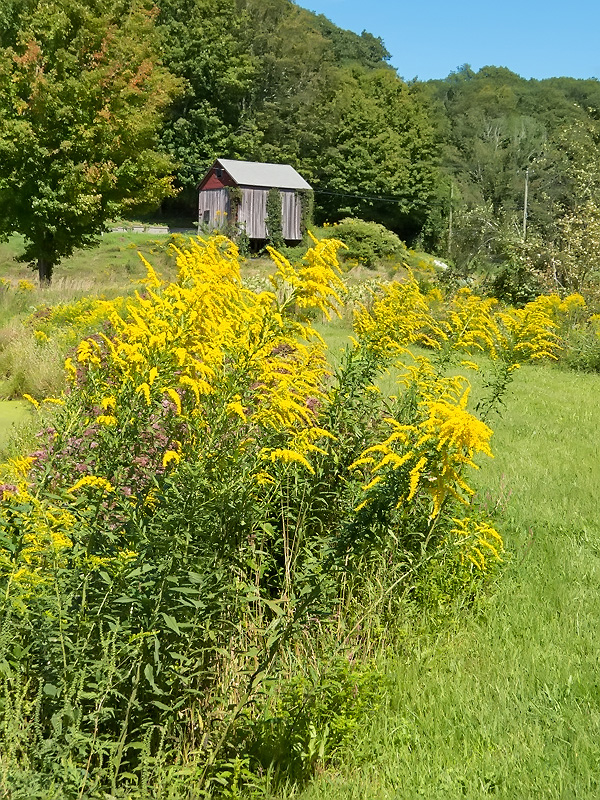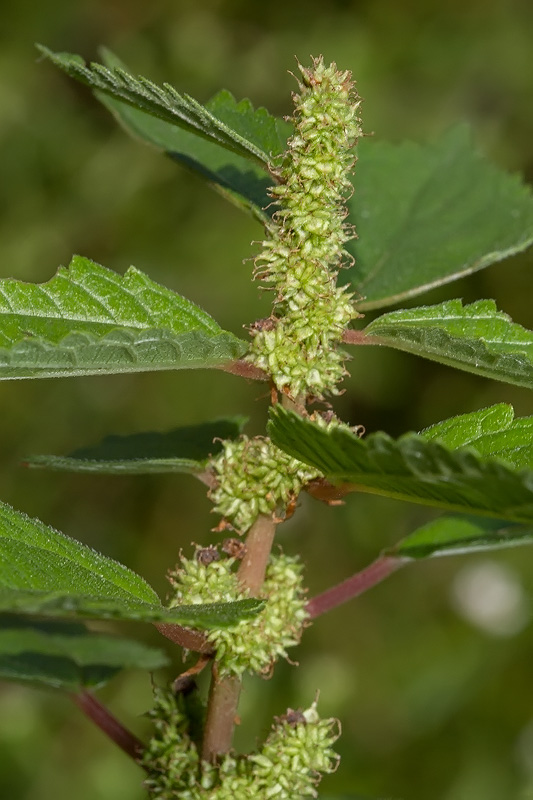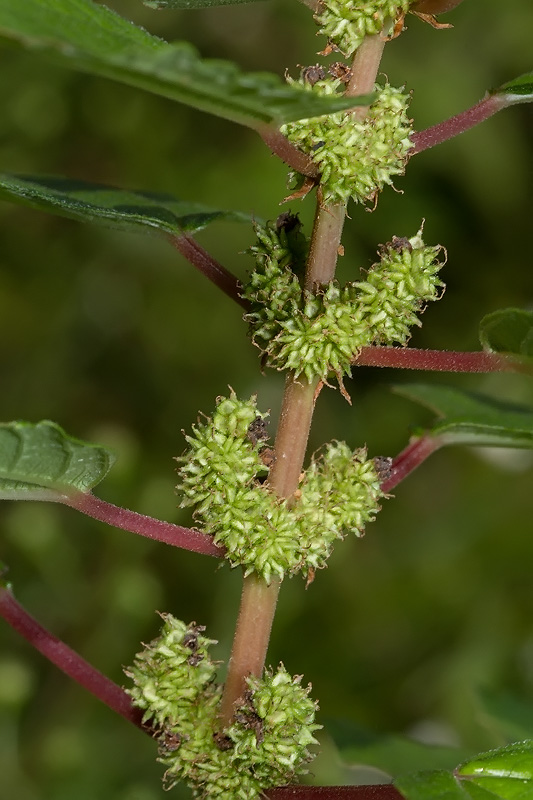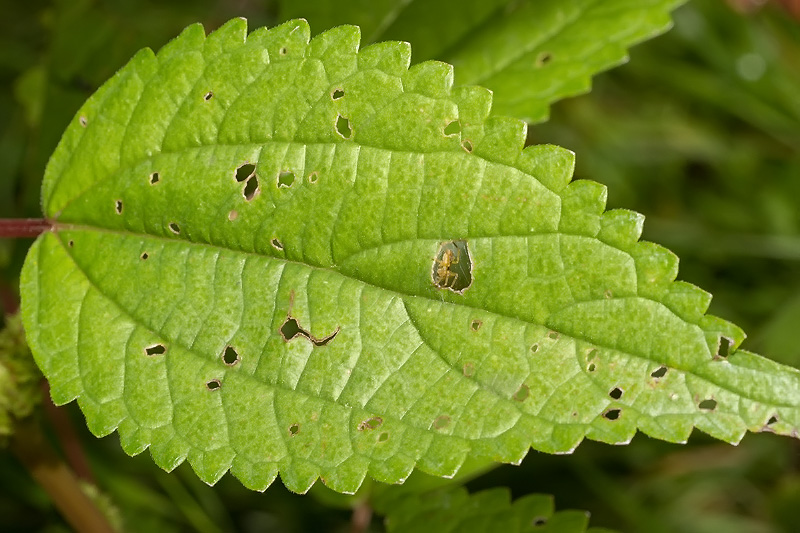Along the Air Line... 2013 - Summer, Part 8 The Air Line Trail in Eastern Connecticut - Stan Malcolm Photos |
mHome Page Stan's FlickR Albums |
August 31st. Recent recutting of sight lines into Raymond Brook Marsh has offered views of several emergent water plants including Fragrant Water-Lilies (Nymphaea odorata)... |
|
|
...and the last of this year's Pickerelweed (Pontederia cordata). |
Spotted Touch-Me-Not or Jewelweed (Impatiens capensis). Lighter colored than most Jewelweed, but not light enough or with a short enough spur to be Impatiens pallida. |
|
|
New photos of the Eastern Comma (Polygonia comma) chrysalis, trying to capture the metallic spots on its back. This gives you some idea, but hardly compares with the mirror-like gleam of the real thing. |
|
|
|
September 1st. Indian Pipes (Monotropa uniflora). |
The plant lacks chlorophyll, getting its nourishment from decaying organic matter via fungi associated with its roots. It has a single flower per stalk and leves reduced to scales. |
Turkey-tail bracket fungi (Trametes versicolor). |
|
September 3rd. The Eastern Comma chrysalis has "colored up" - the pattern of the adult butterfly wings showing through the translucent chrysalis skin. Usually, this means the butterfly will emerge within a day... |
...but not this time. The butterfly failed to emerge, even though you can see (e.g., at the abdominal tip) that it has pulled free of the chrysalis skin. There's a crack in that skin between the antenna and front wing - the usual place where it's meant to open, but at that point the process went wrong. Could be that the caterpillar was parasitized and killed the insect just before emergence - in which case one of these days, a wasp or flies will emerge from it. We'll see. |
September 6th. Sunflowers (Helianthus sp.) at the Rt 85 trailhead. |
|
There's a bird about 2' up from the base of this tree. |
An Eastern Phoebe (Sayornis phoebe) I think, on a stump at the base of the dead tree in the previous picture. |
Painted Turtles (Chrysemys picta) basking. I count 14 in this photo. |
|
Hazelnut husks are turning brown as the nuts inside mature. |
A female Green Darner (Anax junius) dragonfly. |
|
|
A mature Tiger Swallowtail (Papilio glaucus) caterpillar, about ready to transform into a chrysalis. |
|
|
|
|
September 7th. Tree Swallows (Tachycineta bicolor) gathered on their favorite tree. Nice to know they haven't gone south just yet. |
|
|
|
Winterberry (Ilex verticillata) berries have ripened. |
A mid day visit to Cranberry Bog in East Hampton. Nice to see a rare Monarch (Danaus plexippus) nectaring on Joe-Pye-weed. |
|
|
|
|
|
|
|
A large patch of Turtlehead (Chelone glabra). |
|
|
A common species of Smartweed (Polygonum sp.). |
Another species of Smartweed (Polygonum sp.). |
I see this species of Grasshopper in late summer every year at Cranberry Bog. |
Seed pods of Swamp Milkweed (Asclepias incarnata)... |
...covered with Aphids. (This orange species is very common on other milkweeds too.) |
|
I think this is Canada Clearweed (Pilea pumila); certainly it is a member for the nettle family Urticaceae. |
|
|
